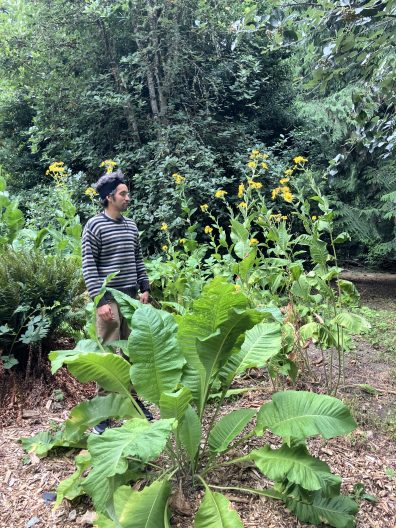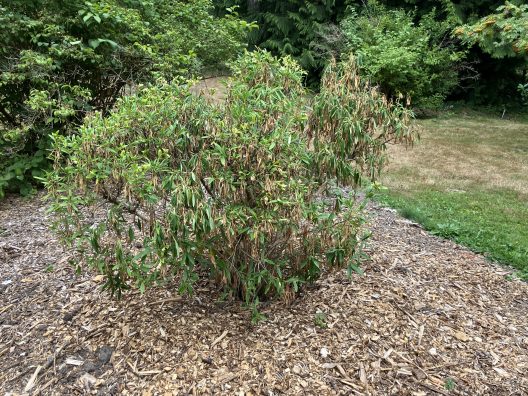Staff Profile – Arturo Zazueta

Fall in the Pacific Northwest is an incredible transformation: maple trees put on their annual autumnal display, temperatures finally cool down from the 80s we suffer through all August, and dry, withered grass suddenly seems to green up overnight as the rain finally returns.
As we enter our rainy season, it’s worth looking back on the work it takes to keep our plant collection healthy over the course of a long, dry summer. While the Washington Park Arboretum does have an irrigation system to help support the variety of plant specimens, it’s up to the horticulturists to monitor this system and make sure every plant gets the water it needs.
This past summer, horticulturist Arturo Zazueta hauled 5-gallon buckets of water out to five oak leaf hydrangeas almost every day. One July morning, I helped him pass the buckets over the creek and then up an incline, away from the trail, to pour water on each thirsty hydrangea.
“This is much easier with two people,” he remarked as we slogged the buckets up the hill. Arturo had 75 plants on his plant care list; each member of the horticulture team gets a summer plant care list of individual plants that need a little extra attention or care. Some of them, like the hydrangeas, aren’t covered by the irrigation system; others are new installations or younger plants and need a little extra water as they get established; and some plants are just a little needy.
Arturo made sure to visit each of his 75 plants at least once a week on top of his regular work. Every horticulturist on the team was doing the same, with some plant lists covering more than 100 individual plants that needed the extra TLC.
Arturo didn’t take a straight career path into horticulture. Right out of high school, he worked in the Washington Conservation Corps for a summer before heading to Western Washington University. When he started college, he wanted to be an elementary school teacher – but after a year at Western Washington University, he realized a traditional college education wasn’t working for him. Over the years, he’s attended classes at a handful of community colleges, worked as a camp counselor, line cook, and server. When the pandemic disrupted his work in food service, he pivoted to working as a summer helper for the landscape gardener at the King County Wastewater plant in Renton. After that summer, he found a job at Brightwater for a couple of years before starting as an intern here at the Washington Park Arboretum. After the internship, he started working full-time at the Arboretum about a year ago.
One of the best parts of the job, he says, is that work at the Arboretum is closely tied to research and science; he’s been able to help with pest surveys, write best management practices for those pests, and expand his plant knowledge in a site that grows a wide variety of species. He’s also been able to enroll at Edmonds College, working towards a certificate in landscape horticulture while still balancing his workload at the Arboretum.

When I asked if he had a favorite plant, Arturo shared that he loves quaking aspen trees; he helped plant a grove of them at Brightwater. But then, he adds, he also has a very specific plant that is a favorite right now. We then visited a very sad-looking Carpentaria shrub that was donated & installed back in the spring; it was struggling to establish, with withered leaves and an overall limp appearance. “This is one of my Monday plants.” He checks on it every Monday, trying to coax it to survive the shock of transplantation. “I’m really hoping it makes it,” he said.
You can find Arturo working on the north end of the Arboretum, including Duck Bay, the Sorbus Collection, the Mediterranean Bed, and north of the stone bridge between the Arboretum Creek and the trail. And if you want to check up on the Carpentaria shrub – like I will be – you can look for it planted along the trail winding through the Sorbus Collection.